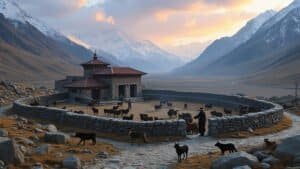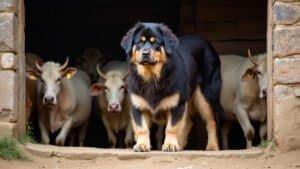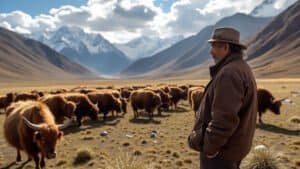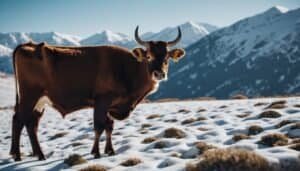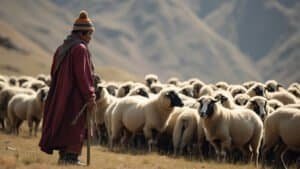Introduction
Livestock insurance schemes are increasingly recognized as an effective tool to reduce conflicts between farmers and wildlife, particularly in regions where predator attacks on livestock are common. By offering financial compensation to farmers for losses, these schemes help mitigate retaliatory killings of endangered species and promote peaceful coexistence
This article will explore how livestock insurance schemes work, the types of conflicts they aim to address, and examples of success from around the world. Additionally, we will examine the challenges faced by these programs and how they can be improved to ensure long-term effectiveness in reducing human-wildlife conflicts
How Livestock Insurance Schemes Work
Livestock insurance schemes have emerged as an important strategy to mitigate conflicts between farmers and wildlife in regions where predator attacks on livestock are common
These schemes provide financial compensation to farmers for livestock losses caused by wild animals, reducing the motivation for retaliatory killings of endangered or protected species. The basic idea is to protect the livelihoods of farmers while promoting wildlife conservation, encouraging a more balanced coexistence between humans and nature
Implementing these insurance programs, however, involves collaboration between governments, NGOs, and local communities to ensure that both financial protection and wildlife conservation goals are met
The Basics of Livestock Insurance
Livestock insurance typically functions as a policy purchased by farmers, where they pay a premium to cover potential losses from wildlife attacks. In return, if a farmer’s livestock is killed or injured by a wild predator, the insurance policy compensates them for their loss based on the value of the animal
This financial safety net helps reduce the economic impact of losing valuable livestock, which might otherwise lead to severe financial hardship. In many cases, premiums are subsidized by governments or conservation organizations to make them affordable for small-scale farmers, ensuring broad participation in these programs
Livestock insurance schemes often cover a wide range of farm animals, from cattle and sheep to goats and poultry, depending on the region and the prevalent types of predators
The insurance process typically involves assessing the value of the livestock, the likelihood of predation in the area, and the effectiveness of preventative measures, such as fencing or herding practices
Policies can be tailored to specific wildlife threats, such as snow leopards in mountainous regions, lions in African savannahs, or wolves in European or North American regions
How Insurance Helps Farmers and Reduces Conflict
By providing financial compensation for livestock losses, these schemes address one of the main causes of human-wildlife conflict: the economic burden placed on farmers by predator attacks
When a farmer loses livestock without compensation, they may view the predator as a direct threat to their livelihood and respond by killing the animal, sometimes illegally
This retaliatory behavior can decimate local wildlife populations, particularly endangered species like snow leopards, tigers, or wolves. Livestock insurance reduces the need for such responses by ensuring that farmers do not bear the full economic cost of predation
Additionally, livestock insurance schemes often come with educational components, where farmers receive training on coexistence strategies. These can include improved herding techniques, the use of predator-proof enclosures, or the introduction of guard animals like dogs or donkeys, which deter predators
This holistic approach combines financial protection with practical solutions to reduce the frequency of livestock attacks, creating a more sustainable balance between human and wildlife needs
Typical Coverage and Payout Process
The payout process in livestock insurance schemes typically begins with the verification of a claim. If a farmer’s livestock is killed by a predator, they must report the loss to the insurance provider, who then sends a team to verify that the death was caused by wildlife
This step ensures that the claim is legitimate and not the result of natural causes, disease, or human error. Once verified, the farmer receives compensation based on the market value of the lost livestock
The coverage provided by livestock insurance policies can vary. Some offer full compensation for the market value of the animal, while others may cover a percentage of the loss to ensure the long-term financial sustainability of the program
The speed of compensation is crucial in these schemes; delays can undermine the program’s effectiveness by leaving farmers in financial distress, potentially prompting them to retaliate against wildlife before the insurance payout arrives. Thus, streamlined claims processing is essential for the success of livestock insurance programs
Governments and conservation organizations often work together to ensure that the cost of premiums remains manageable for farmers. In some cases, premiums are entirely subsidized, especially in poorer regions where farmers may not have the financial means to participate otherwise
For example, programs in India and Nepal, where snow leopards threaten local livestock, often involve partnerships between international conservation organizations and local governments to cover the costs of insurance for impoverished farmers
Types of Conflicts Addressed by Livestock Insurance
Livestock insurance schemes are designed to address specific types of conflicts between humans and wildlife, particularly those arising in regions where wild predators threaten livestock
These conflicts often result from the economic loss caused by predators attacking farm animals, which leads to retaliatory actions by farmers, endangering local wildlife populations. By covering the financial losses incurred by such predation, livestock insurance schemes aim to mitigate these conflicts, promoting coexistence between communities and wildlife
Understanding the types of conflicts these programs address is key to evaluating their effectiveness
Predatory Wildlife and Livestock Losses
One of the primary conflicts addressed by livestock insurance schemes is the predation of farm animals by wild predators. In many regions, species such as snow leopards, wolves, lions, tigers, and bears pose a significant threat to livestock, especially in rural areas where herding is a primary source of livelihood
These large carnivores, while crucial to maintaining the balance of ecosystems, often come into conflict with human populations when they prey on domesticated animals, such as cattle, sheep, goats, or even poultry
In areas where wild predator populations are healthy, these attacks can be frequent, leading to substantial economic losses for farmers. Without financial compensation, these losses can push farmers to kill or poison predators to protect their livestock
Livestock insurance schemes offer a solution by compensating farmers for their losses, allowing them to tolerate the presence of predators without resorting to lethal control methods. This, in turn, helps to protect vulnerable and often endangered predator populations, many of which are vital to the health of local ecosystems
Human-Wildlife Conflicts in Agricultural Regions
Livestock insurance schemes also address broader human-wildlife conflicts in agricultural regions where expanding human populations encroach on wildlife habitats
In many parts of the world, human settlements and farming activities have pushed into areas traditionally occupied by wildlife, increasing the likelihood of interactions between people and wild animals
As agricultural lands grow, wildlife often loses habitat and food sources, forcing species like large carnivores to prey on livestock as a more accessible source of food
This encroachment intensifies conflicts, as farmers view wildlife as a threat to their economic well-being. Livestock insurance schemes help mitigate these tensions by recognizing the farmers’ financial stakes and offering a fair compensation system for losses
This reduces the pressure on farmers to kill wildlife in retaliation and encourages them to implement coexistence strategies, such as improved herding practices, fencing, or the use of guard animals to protect livestock
In addition to predator attacks, other forms of wildlife damage, such as crop destruction by herbivores like elephants or wild boars, can also be addressed through comprehensive insurance programs. In these cases, insurance coverage can be extended to include both livestock and agricultural damage, further reducing the potential for conflict
Conflict Hotspots and Insurance Coverage
Certain regions of the world are particularly prone to human-wildlife conflict, making them ideal locations for implementing livestock insurance schemes. In Asia, for example, the mountainous regions of Nepal, Bhutan, and India, where snow leopards and wolves are prevalent, have seen the introduction of such schemes to mitigate losses among pastoralist communities
Similarly, in Africa, countries like Kenya and Tanzania have implemented livestock insurance to protect farmers from losses caused by lions, leopards, and hyenas. These regions are considered conflict hotspots due to the high density of predators and the dependence of local communities on livestock farming
In these areas, insurance schemes are often tailored to the specific challenges of the region. For example, in the Himalayas, where snow leopards pose a significant threat to yaks and sheep, insurance programs have been developed in collaboration with local conservation groups and governments to ensure that pastoralist communities can coexist with wildlife
Similarly, in African savannahs, where large carnivores frequently come into contact with cattle herds, insurance programs are designed to cover the high costs of livestock losses, reducing the need for retaliatory killings of lions and other predators
Coverage in these hotspots often includes additional conservation incentives. For example, farmers may receive higher compensation if they implement certain wildlife-friendly practices, such as predator-proof enclosures or rotational grazing to reduce conflict with wildlife
This approach not only addresses the immediate financial losses but also encourages long-term solutions that benefit both farmers and wildlife
Success Stories and Regional Examples
Livestock insurance schemes have been successfully implemented in various regions around the world, with notable examples in Asia, Africa, and Latin America
These programs not only reduce human-wildlife conflict but also encourage communities to adopt more sustainable practices that benefit conservation efforts
By examining success stories from different parts of the world, we can better understand how these schemes have helped to foster coexistence between farmers and wildlife while preserving endangered species
Livestock Insurance in Asia
In the mountainous regions of Asia, particularly in countries like Nepal, India, and Bhutan, snow leopards and wolves have been a major source of livestock loss for rural herders
In response, conservation organizations and governments have implemented livestock insurance schemes that provide compensation for losses, significantly reducing the killing of these endangered predators. One such success story is the Snow Leopard Conservancy’s insurance program in Nepal and Ladakh, India, which has been running for over two decades
In these regions, herders rely heavily on livestock for their livelihood, and when a snow leopard kills a sheep, goat, or yak, the financial loss can be devastating. The insurance schemes, often subsidized by conservation groups, compensate farmers for the market value of their lost livestock, easing the economic burden
In return, the farmers commit not to retaliate by killing the predator. As a result, snow leopard populations have stabilized, and instances of retaliatory killings have decreased by up to 55% in some areas
Moreover, these programs have encouraged the use of non-lethal preventive measures. For example, herders are trained to build predator-proof enclosures, use guard dogs, and adopt rotational grazing practices
These additional measures complement the insurance scheme by reducing the frequency of livestock losses, leading to a more sustainable coexistence between people and predators
Case Studies from Africa and Latin America
Africa has also seen the implementation of successful livestock insurance schemes, particularly in regions where large carnivores like lions, leopards, and hyenas come into conflict with farmers
One prominent example is the Predator Compensation Fund in Kenya’s Maasai Mara region, where local Maasai herders face significant threats to their cattle from lions and other predators
The program, supported by wildlife conservation organizations, compensates herders for livestock losses due to predation, provided they can prove that the loss was caused by a wild animal
Since the program’s implementation, retaliatory killings of lions have decreased significantly. The insurance not only alleviates the financial loss for herders but also fosters a greater appreciation for the role of lions in the ecosystem
As a result, local communities have become more invested in lion conservation efforts. The program has been credited with helping to stabilize lion populations in the Maasai Mara, a region where these big cats face considerable pressures from both habitat loss and conflict with humans
In Latin America, similar schemes have been introduced to protect jaguars and pumas, especially in countries like Brazil and Argentina, where these predators frequently target cattle. In Brazil’s Pantanal region, for example, insurance programs have been paired with educational outreach, teaching ranchers about predator ecology and non-lethal deterrents
These efforts have helped to reduce jaguar killings and promote peaceful coexistence, demonstrating the effectiveness of combined insurance and conservation strategies
Success Rates in Reducing Retaliatory Killings
The overall success of livestock insurance schemes in reducing retaliatory killings is a key indicator of their effectiveness. Across the various regions where these schemes have been implemented, significant reductions in the killing of predators have been reported
For example, in areas of Nepal where snow leopard insurance programs have been active, the number of snow leopards killed in retaliation for livestock predation has dropped by over 50%. Similarly, in Kenya’s Maasai Mara, retaliatory lion killings have decreased by approximately 60% since the launch of the Predator Compensation Fund
These success rates are bolstered by the broader benefits that insurance schemes bring to communities. In many cases, these programs foster a sense of ownership and responsibility for wildlife conservation among local populations
By reducing the economic pressure on farmers, insurance schemes help shift attitudes away from viewing predators solely as threats and toward recognizing their ecological value. Additionally, many programs incentivize farmers to adopt preventive measures, further reducing the likelihood of conflict
The success of these programs is not universal, and certain challenges remain, particularly in ensuring prompt and fair compensation
However, where livestock insurance schemes have been well-designed and supported, they have proven to be an effective tool in reducing conflicts and protecting both farmers’ livelihoods and wildlife populations
Challenges and Limitations of Livestock Insurance
While livestock insurance schemes have shown promise in reducing human-wildlife conflicts, they are not without challenges and limitations
Implementing these programs successfully requires addressing financial, logistical, and social obstacles that can impact their long-term sustainability and effectiveness
Some of the main challenges include ensuring the financial viability of insurance schemes, processing claims efficiently, and balancing the interests of farmers with broader conservation goals. By understanding these limitations, stakeholders can work towards improving the design and implementation of livestock insurance programs
Financial Sustainability and Premium Costs
One of the biggest challenges facing livestock insurance schemes is their financial sustainability. In many regions, particularly in developing countries, farmers may struggle to afford the premiums required to participate in insurance programs
Even with government or NGO subsidies, these premiums can be seen as an additional financial burden, especially for small-scale or impoverished farmers who may already face economic hardships
To make these schemes accessible, many programs rely on external funding from international conservation organizations or governments. While this helps subsidize premiums and reduce costs for farmers, it also raises concerns about the long-term sustainability of the programs
If external funding diminishes or stops, the insurance schemes could collapse, leaving farmers unprotected and wildlife vulnerable to retaliatory killings
Additionally, determining appropriate premium levels that reflect the risk of livestock predation while still being affordable for farmers is a complex task. Premiums must be high enough to cover potential losses but low enough to encourage widespread participation
In some regions, insurance providers have experimented with tiered pricing models, where farmers who implement preventive measures, like predator-proof fencing or guard animals, pay lower premiums. This approach incentivizes participation and reduces the likelihood of livestock losses, though it requires continuous monitoring and community engagement
Issues with Claim Processing and Coverage Gaps
Another significant challenge is the efficient and timely processing of insurance claims. For livestock insurance schemes to be effective in reducing conflicts, farmers need to trust that they will be compensated fairly and promptly for their losses
Delays in processing claims or disputes over the cause of livestock deaths can erode farmers’ confidence in the system, leading them to resort to retaliatory killings of predators even before receiving compensation
Verifying the cause of livestock deaths can be difficult, particularly in remote areas where predators roam. Insurance providers typically require proof that the death was caused by wildlife, which may involve sending investigators to the scene or relying on photographic evidence from farmers
This verification process can be slow, especially in regions with limited infrastructure or where insurance providers have limited resources. In some cases, this leads to significant delays in compensation, undermining the effectiveness of the scheme
Coverage gaps also present a challenge. In many insurance schemes, compensation is only provided for certain types of livestock or specific predatory species, leaving farmers exposed to other risks. For example, a program might cover cattle losses caused by snow leopards but not compensate for losses caused by wolves or domestic dogs
This incomplete coverage can frustrate farmers and reduce their overall willingness to participate in the program, as they may feel that the insurance does not fully address the risks they face
Balancing Farmer Interests with Conservation Goals
A key challenge in livestock insurance schemes is balancing the interests of farmers with broader wildlife conservation goals. While these programs are designed to compensate farmers and reduce retaliatory killings, they must also ensure that conservation efforts are prioritized
In some cases, farmers may feel that the compensation provided is insufficient or that the insurance does not adequately reflect the true value of their livestock, leading to dissatisfaction with the program
Furthermore, farmers may prioritize their immediate financial needs over long-term conservation objectives. For example, they may seek higher compensation for livestock losses without implementing preventive measures to reduce predation
Insurance providers often attempt to strike a balance by offering lower premiums or additional benefits to farmers who adopt wildlife-friendly practices, but this requires ongoing education, outreach, and monitoring to ensure compliance
In regions where wildlife species are already endangered or under significant threat, this balancing act becomes even more critical. Conservation organizations may push for stricter protections for predators, while farmers demand greater compensation or more aggressive measures to prevent livestock losses
Navigating these competing interests requires effective communication and collaboration between all stakeholders, including farmers, insurance providers, conservationists, and government authorities
Conclusion
Livestock insurance schemes have proven to be a valuable tool in reducing human-wildlife conflicts, particularly in regions where large predators pose a threat to farmers’ livelihoods
By offering financial compensation for livestock losses, these programs mitigate the economic burden on farmers, decreasing the likelihood of retaliatory killings of endangered wildlife such as snow leopards, lions, and jaguars
Success stories from Asia, Africa, and Latin America highlight how these schemes, when well-implemented, can foster coexistence and promote long-term conservation efforts
However, the effectiveness of livestock insurance depends on overcoming several challenges, including ensuring financial sustainability, processing claims efficiently, and addressing coverage gaps. Additionally, balancing the immediate needs of farmers with broader conservation goals remains a delicate task
Addressing these challenges through innovative solutions, such as tiered premiums and preventive measures, is key to improving the future of these programs. Ultimately, livestock insurance can play a crucial role in protecting both vulnerable species and local communities, encouraging a more harmonious relationship between humans and wildlife



